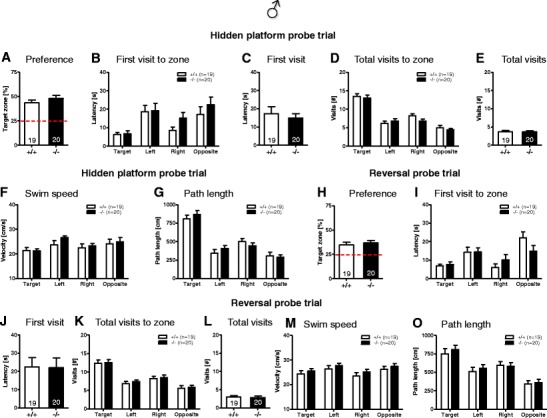Fig. 7.

Spatial probe trial behavior is unaffected in male Munc13-3 −/− mice. Male Munc13-3 −/− mice use spatial search and navigational strategies similar to Munc13-3 +/+ mice in the hidden platform (A–G) and reversal learning spatial probe trial (H–O). A, H Preference for the former platform zone expressed as percent of time spent in the target zone. Dashed red line indicates performance at chance level. B, I Latency of the first visit to the indicated zones. Please note that (irrespective of genotype) the latency to visit the target zone is significantly lower (p values <0.05; t test for dependent samples) as compared to the other zones. C, J Latency of the first visit (crossing) of the former platform location within the target quadrant. D, K Total number of visits to the indicated zones. Please note that (irrespective of genotype) the number of visits to the target zone is significantly higher as compared to the other zones (p values <0.05; t test for dependent samples). E, L Total number of visits (crossings) of the former platform location within the target quadrant. F, M Mean swim speed in the indicated zones. G, O Total path length (distance swum) in the indicated zones. Please note that (irrespective of genotype) the path length in the target zone is significantly higher as compared to the other zones (p values <0.05; t test for dependent samples). Mean ± SEM presented; respective sample sizes are indicated in the panels
